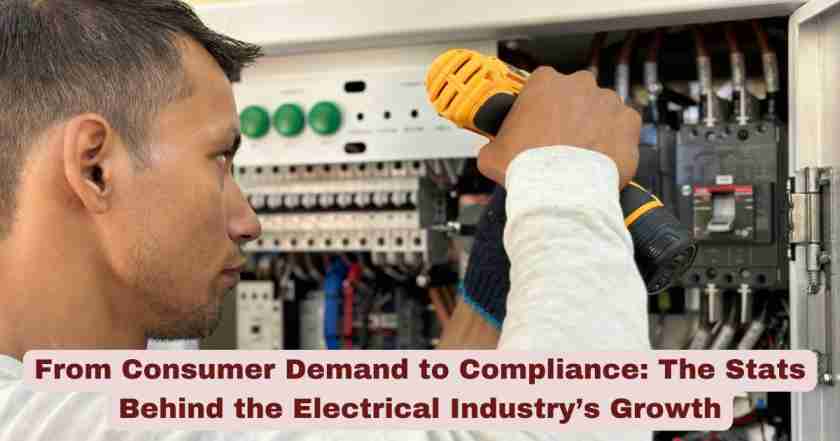The electrical industry is undergoing a remarkable transformation. What was once a relatively stable sector has become a hotbed of innovation, regulation, and unprecedented consumer demand. From smart homes to industrial automation, the forces driving this change are vast—and they’re measurable.
A Surge in Global Demand
Consumer demand for electricity-powered devices, green energy solutions, and digital infrastructure has surged in the past decade. According to the International Energy Agency (IEA), global electricity demand rose by 2.2% in 2023, with developing economies accounting for over 70% of the increase. The expansion of data centers, EV infrastructure, and smart technologies is accelerating this growth further.
In the UK, the Office for National Statistics reports a steady rise in the value of electrical equipment manufacturing, contributing significantly to GDP. These shifts aren’t just reflective of household needs but of wider industrial adoption—a crucial driver for sector-wide innovation.
The Role of Regulation and Compliance
Alongside this demand boom, stricter safety and energy-efficiency regulations have emerged. Compliance is no longer optional; it’s a fundamental aspect of the industry’s evolution. The UK’s Wiring Regulations (BS 7671) and updated building codes now require stricter adherence to energy performance standards and fire safety in electrical installations.
As a result, both domestic and commercial electrical projects are increasingly turning to certified professionals and compliant products. This shift isn’t just improving safety standards but also stimulating demand for higher-quality components and up-to-date systems.
Digital Transformation in Supply Chains
Digital transformation has touched nearly every part of the electrical industry—from design and installation to procurement and maintenance. Electrical suppliers are leveraging e-commerce platforms, advanced logistics, and real-time inventory systems to meet the expectations of modern contractors and engineers.
For example, sourcing industrial electrical supplies has become more efficient thanks to online platforms that offer a wide range of compliant, professional-grade components. This convenience, paired with the need for speed and traceability in projects, is pushing traditional supply chains to evolve.
Smart Technologies and Renewable Energy
A key trend shaping the industry is the integration of smart technology and renewable energy. The UK government’s push toward net zero has sparked investment in solar panels, energy storage systems, and electric vehicle charging infrastructure. As of 2024, there are over 1.4 million EVs on British roads, and every one of them depends on robust electrical infrastructure.
Meanwhile, businesses are embracing smart lighting, automated energy management, and connected systems to reduce costs and emissions. This shift requires not only tech-savvy installers but also advanced, compatible components, placing further pressure on suppliers and manufacturers to innovate.
What the Future Holds
Looking ahead, the electrical industry is projected to continue growing at a healthy pace. Deloitte forecasts a 4.5% annual growth rate globally for the next five years, driven largely by electrification, energy transition goals, and infrastructure upgrades. The demand for skilled electricians, high-performance products, and compliant solutions will only intensify.
From tighter regulations to consumer tech trends, the industry is riding a wave of change, and those who can adapt quickly will be the ones to power the future.







